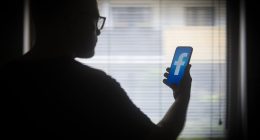
PBS built out its Diversity, Equity and Inclusion team in fiscal year 2022. The public broadcaster’s second annual DEI report, released Monday morning, noted that the network created a DEI Office during the period and hired a staff, including DEI head Cecilia Loving and DEI director Gina Leow, in addition to establishing employee resource groups and DEI advocates and committees.
The moves coincided with its workforce reaching 44 percent BIPOC, a six-year high and higher than the 37 percent average across the broadcast industry. Fifty-six percent of PBS’ 551 total staffers are white, 20 percent are Black, 11 percent are Asian, 10 percent are Hispanic or Latino, 2 percent are multiracial, less than 1 percent are Pacific Islander and none are Native American. Among the executive ranks, 29 percent of PBS execs are Black and the rest are white. More than half of the network’s technicians and administrative support staff are BIPOC (63 percent and 57 percent, respectively). Sixty percent of all staff identify as women, including 43 percent of the executive ranks. Meanwhile, PBS’ 27-member board has 13 women (compared to 14 last fiscal year) and 10 people of color (up from eight).
PBS has also tracked the race/ethnicity and gender demographics of its hiring, promotion and exits, which all reached six-year highs in fiscal year 2022. Among the 147 newest employees, 73 percent are women and 48 percent are BIPOC. Women comprised nearly two-thirds (64 percent) of the 69 promotions and 53 percent of the 95 exits, while 35 percent of last year’s promoted employees and 36 percent of departures were BIPOC.
In terms of content, 58 percent of documentary programming in the last fiscal year either featured BIPOC talent, was produced by BIPOC creators or explored what PBS calls “diversity-related topics,” which it defines as “diverse” history, current events or protagonists. Among the 554 documentary hours aired in primetime, 155 (28 percent) were executive produced, produced, directed or written by BIPOC creators. Fifty-four percent of its national primetime schedule was labeled diverse in some way and 46 percent was not.
As with many other media companies, the digital platforms skewed more diverse. Of the 25 PBS Digital Studios series released last fiscal year, 68 percent were led by BIPOC creators and 73 percent featured BIPOC talent. Half of PBS DS hosts identify as BIPOC.
PBS’ reach among children remains a point of pride for the public broadcaster. According to Nielsen, its stations reach more Hispanic, Black and Asian American children aged 2-8 than any other children’s TV network, and 44 percent (4.2 million) of all children in low-income households. PBS Kids is also working to make its programming more accessible, with 37 percent of its episodes featuring Spanish captions or secondary audio and 82 percent of its episodes offering descriptive audio.
Source: Hollywood







